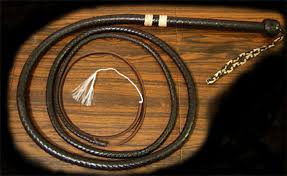 Cupboard Cat
Cupboard Cat Milk & Honey
Milk & Honey

Japanese Bondage
Kinbaku is the word for "erotic bondage" or Kinbaku-bi which means "beautiful bondage". Kinbaku (also Sokubaku) is a Japanese style of sexual bondage or BDSM which involves tying up the bottom using simple yet visually intricate patterns, usually with several pieces of thin rope usually hemp or jute (generally 6 mm or 8 mm in diameter).
The word Shibari came into common use in the West at some point in the 1990s to describe the bondage art Kinbaku. Shibari is a Japanese word that literally means "to tie" or "to bind". It is used in Japan to describe the artful use of twine to tie objects or packages.
Japanese Bondage (kinbaku) is said to differ from Western bondage in that, instead of just immobilizing or restraining the bottom, the bottom gains pleasure from being under the pressure and strain of the ropes, squeezing the breasts or genitals.
The aesthetics of the bound person's position are also important: In particular, Japanese bondage is distinguished by its use of asymmetric positions to heighten the psychological impact of the bondage. There are examples found among Western bondage enthusiasts such as John Willie.
Western full-body bondage also uses long lengths of rope and the type of rope has changed over the years: cotton was used early on, then nylon became popular in the 1980s or 1990s, followed by multi-filament polypropylene (MFP) ropes. Compare this to Japanese bondage techniques, in which multiple pieces of natural vegetable fiber rope (hemp, jute, or linen) of 7 meters are used. Traditional Hojōjutsu the martial art employed by the Samurai uses no knots whatsoever, while modern Japanese-inspired Western bondage uses relatively simple knots (requiring only about two to five types.).
With its roots firmly in Japan, Kinbaku has gained popularity, being taught by teachers (sensei) all over the world.
The origins of Shibari were not erotic or pornographic - it was a Japanese form of imprisonment, used by Samurai (approx 1400s-1700s). There were four basic principles:
- Not to allow a prisioner to slip their bonds
- Not to cause any physical or mental injury
- Not to allow others to see the techniques
- To make the result beautiful to look at
It was in the late 1800s/1900s that the true erotic bondage evolved into the many facets of what you can find today.
 LeeZu Baxter by Newdoll
LeeZu Baxter by NewdollBondage for Sex
There are a lot of books out there for people interested in exploring bondage. A lot of ties look good, but if you want to actually have sex with your partner many of them won't leave you the access you need. This book is the first that I've found to lay out ties that allow for easy sexual positioning.
The Seductive Art of Japanese Bondage
"Rope Bondage." Say those words out loud at a party, and most conversations within earshot will likely pause or stop. However, this is often a misunderstood art, an ancient craft that can convey a variety of meanings and experiences for those that choose to explore it, whether you opt to tie or be tied.
Two Knotty Boys Showing You the Ropes: A Step-by-Step, Illustrated Guide for Tying Sensual and Decorative Rope Bondage
The "boys" have a perfect background: an industrial rigger and a climber, both backgrounds require safety as the basis for everything. The both love bondage and have taught many, many classes. This means they have learned how to teach the techniques to hundreds of others. It shows in the layout of the book. Simple step by step photos that match the written instructions. No matter what the level of the reader, this book will make you better.
Vogue Paris Calendar 2007



